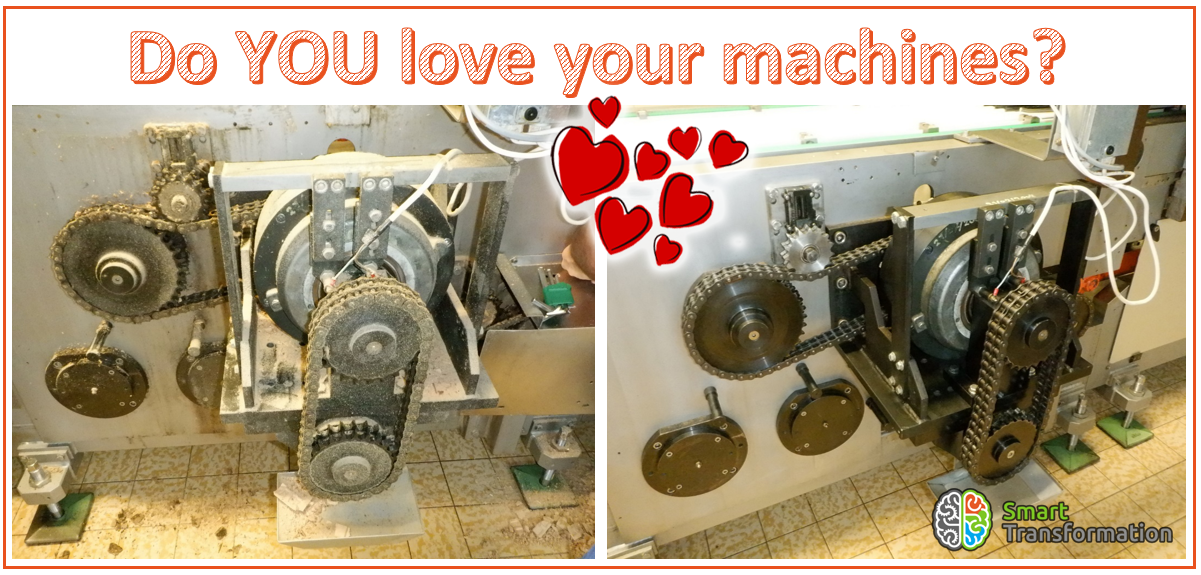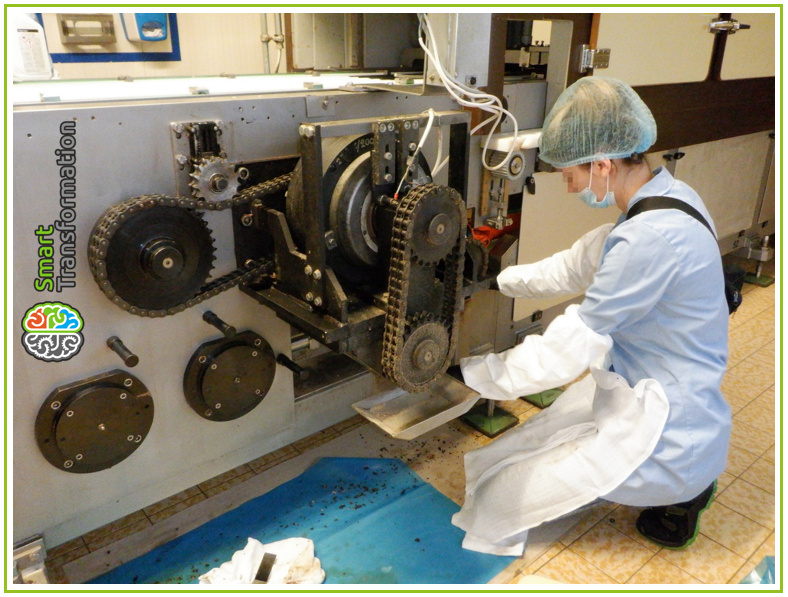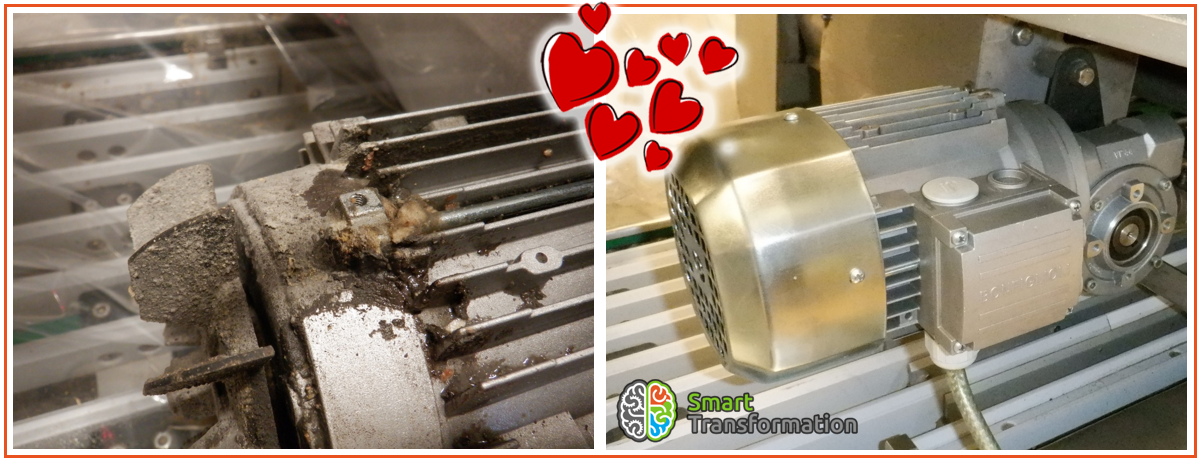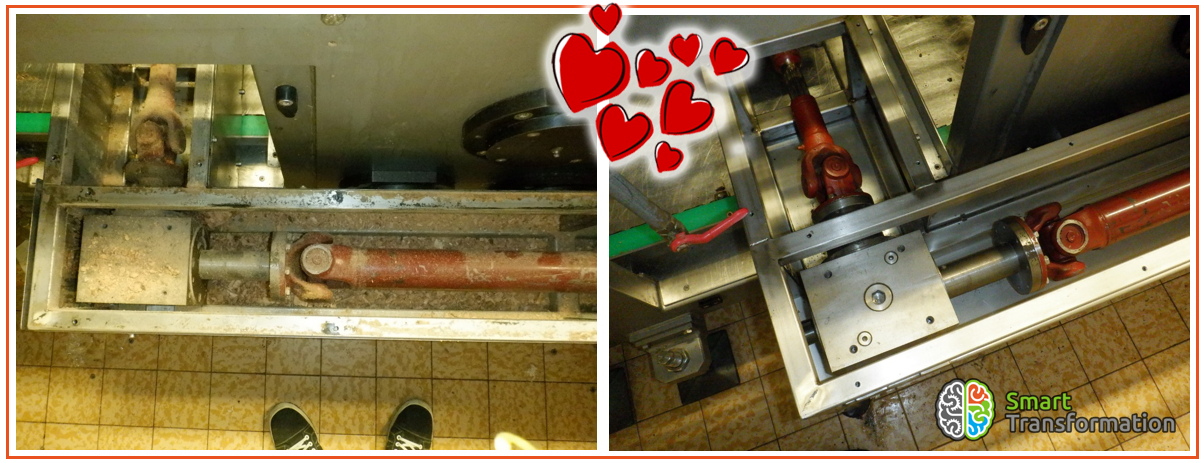
Valentine’s Day is the perfect day to ask about your relationship with machines! 😁
It does happen every so often that machines, or even whole lines, are emotionally and physically neglected, because they lack love and care from both maintenance and production personnel.
I cannot stress enough how loving care of machines always brings tangible returns in form of the absence of failures, lesser downtime, easier diagnostics and greater availability and predictability, not to mention the costs of maintenance.
What you see in the pictures above is one of the many effects of an Autonomous Maintenance workshop. The line we have worked on this time was notoriously problematic, had frequent breakdowns and stops. We approached it with loving care and discovered a lot of places where it had long called for help, but maintenance and operators were deaf and blind to the cry. And not even out of ill will, but just because “that’s how the system worked“.
And what does it look like in practice?
During the workshop, we learn what Autonomous Maintenance is, why do we implement it, what does it mean for our company, what we will be doing and how. Then we do the walk around the machine / line and plan activities, after which we go to the floor to give some care and love to the machines (see next photo). As a result, the machines become clean (often for the first time since time immemorial) and a maintenance action plan is created to bring the machine back to “like new” condition.

There are hardly any workshops during which, in addition to mechanical and technical problems, we would not discover at least several places posing other types of challenges or risks, mainly in quality or even being a direct threat to product safety. There are known, even recent, cases of companies withdrawing many batches of the product from the market, because such gooey matter as shown in the next pair of photos got into the product and caused a series of food poisonings. Sometimes we even find a new and completely unexpected form of life…

Engaging operators in maintenance activities through Autonomous Maintenance always gives great results. These start from expanding the operators’ knowledge and understanding of the detailed workings of the machine / line and bringing the machines to the proper working condition. This obviously makes the machines work better, but what we also gain is the ability to launch further processes and obtain a number of very tangible effects, including:
- easy detection of problems by the operators,
- quick diagnostics and informing the maintenance crew about problems,
- more frequent and more targeted care of machines,
- freeing up maintenance time spent on “mundane” things,
- using this maintenance personnel time for more important, more complicated things,
- reduction of maintenance costs.

Of course, in the photos I only show you some examples and not even the drastic ones 😉. In addition to “visual” change and machine cleanliness, we always draw up an action plan for both maintenance and production, based on which we implement a whole range of processes and mechanisms, both on production and maintenance sides. This keeps the machines from returning to the “before” condition at the same time increasing their availability and performance. Also, there always are fewer quality problems.
If your company does not show such loving care for its machines yet, but you want to start loving them reasonably – feel free to drop me a note or just call. I will be happy to talk about it and to discuss how to do it right in your company and how to teach your people to properly take care of machines. It’s not that hard if you know how, and the results are always worth the little investment.
